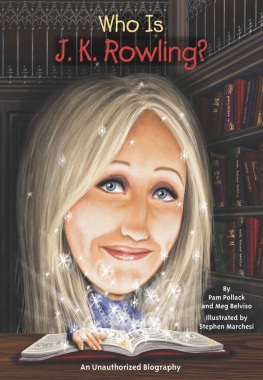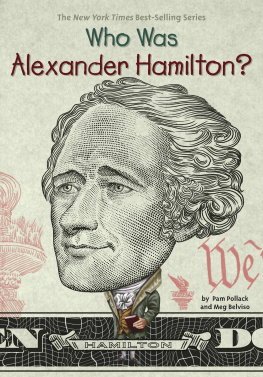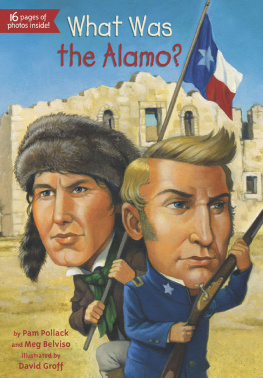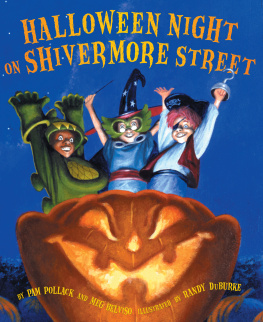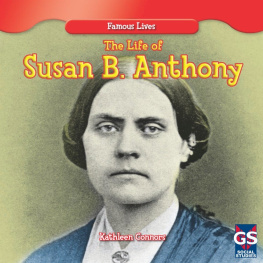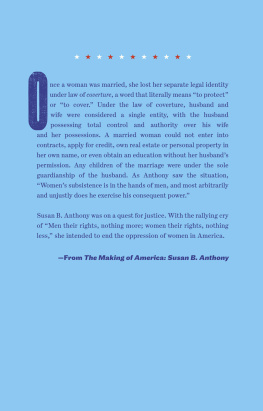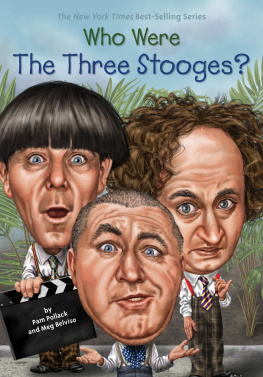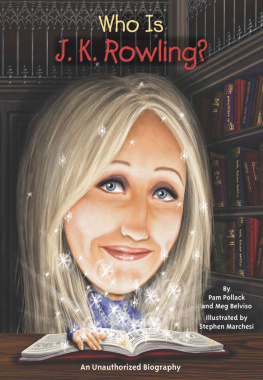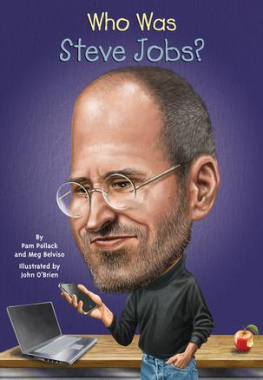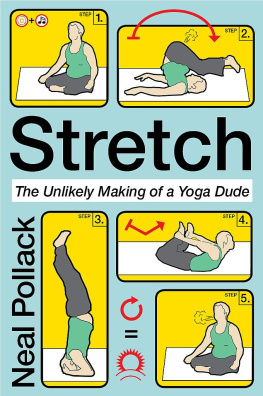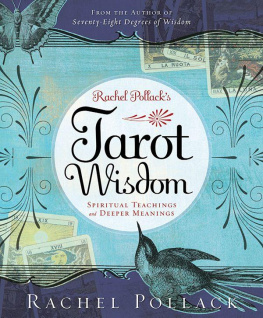For Melina Reyes, Girl Power in full bloomPP
For Smith College, Class of 1990Think your best thoughts, speak your best wordMB
PENGUIN WORKSHOP
An Imprint of Penguin Random House LLC, New York
Penguin supports copyright. Copyright fuels creativity, encourages diverse voices, promotes free speech, and creates a vibrant culture. Thank you for buying an authorized edition of this book and for complying with copyright laws by not reproducing, scanning, or distributing any part of it in any form without permission. You are supporting writers and allowing Penguin to continue to publish books for every reader.
The publisher does not have any control over and does not assume any responsibility for author or third-party websites or their content.
Text copyright 2014 by Pam Pollack and Meg Belviso. Illustrations copyright 2014 by Penguin Random House LLC. All rights reserved. Published by Penguin Workshop, an imprint of Penguin Random House LLC, New York. PENGUIN and PENGUIN WORKSHOP are trademarks of Penguin Books Ltd. WHO HQ & Design is a registered trademark of Penguin Random House LLC.
Visit us online at www.penguinrandomhouse.com.
Library of Congress Control Number: 2014952923
Ebook ISBN 9780698187290
Version_2
Contents
Who Was Susan B. Anthony?
November 5, 1872, was a presidential election day. Ulysses S. Grant was running against Horace Greeley. In Rochester, New York, men sat by the ballot box to receive votes. The men of Rochester entered the polling place, filled out a ballot, and dropped it in the box. It was business as usual.
However, in the doorway stood a middle-aged woman in a black dress. Everyone recognized her. It was Susan B. Anthony, the greatest fighter for womens rights in the United States. She had come with her three sisters. They wanted to vote.
Women did not have the right to vote in New York in 1872. Sometimes women filled out ballots simply as a protest. These ballots were never counted. This year Susan decided to cast a vote herself. She had never done it before only because she spent so much time traveling the country giving speeches for voting rights that she was never at home long enough to prove she lived thereuntil that year.
Susan demanded a ballot. As a citizen of the United States, she said she had the right to vote. She had brought with her a copy of the Fourteenth Amendment of the Constitution, which guaranteed the right of citizens to vote. She had also brought a copy of the New York State Constitution.
The men felt that Susan was wrong. They believed that the Fourteenth Amendment gave only male citizens the right to vote. Susan looked them in the eyes. In her career she had faced down angry mobs; shed been pelted with rotten eggs and tomatoes. Figures made to look like her had been dragged through the streets and burnedall because she wanted equal rights. These men were no match for Susan B. Anthony. They let her and her sisters vote.
Susan was thrilled.
But three weeks later as she sat in her parlor, there was a knock at the door. It was a deputy US marshall. He had come to arrest her. Susan held out her wrists to be handcuffed.
If the US government wanted a fight, she was ready.
Chapter 1
A Quaker Girl
Susan B. Anthony was the second oldest of seven children, five girls and two boys. She was born on February 15, 1820. Her father, Daniel, was a Quaker. Her mother, Lucy, had been a Baptist until her marriage. The Quakers didnt believe in dancing, singing, fancy clothes, or drinking, but they did believe that girls needed an education just like boys did. So Susan and her sisters Guelma, Hannah, and Mary would be educated along with her brothers Daniel and Jacob, called Merritt. (Her sister Eliza died when she was two years old.)
Susan lived in Adams, Massachusetts, until she was six. Then the family moved to Battenville where Susans father opened a mill. One day Susan came home from school upset. The boys in her class were learning long division. When Susan asked her teacher if she could learn it, too, he said that girls didnt need to learn long division.
So Daniel Anthony set up his own school at home where his daughters could get an equal education. Susan liked school. She also liked working at her fathers mill whenever one of his employees got sick. She especially liked earning her own moneythree dollars for two weeks of work! She used her salary to buy her mother six coffee cups and saucers.
But sometimes what happened at the mill puzzled Susan. One day she mentioned to her father that Sally Ann Hyatt, who was one of the workers, seemed to know more about weaving than her boss, Elijah. Why did Daniel not make her the boss? It would never do to have a woman overseer at the mill, her father replied. Susan accepted her fathers word, but it didnt make sense to her. Why couldnt a woman be just as good a boss as a man?
In the evenings, after work and school were over, the family spent many happy hours together in the parlor. Daniel encouraged all his children to take an interest in the important issues of the day. One of these issues was temperancethe fight against making and drinking alcoholic beverages. Another was abolition, the fight against slavery.
When Susan was fifteen, she started to teach the younger children at her fathers school. Two years later she traveled to the nearby town of Easton to live with a family and teach their children reading and writing. When the lessons were done, Susan helped with the household chores.
Daniel knew how much his daughter loved learning. He enrolled her in Deborah Moulsons Female Seminary in Hamilton, Pennsylvania. Susan was not very happy at the seminary. She missed her family.
Her time there was cut short by the Panic of 1837, an economic depression that wiped out many businesses in the United States, including Daniels mill. Now the family had no money. All their possessions were put up for sale, including the cups and saucers Susan had given her mother. Even their eyeglasses and underwear were sold!













